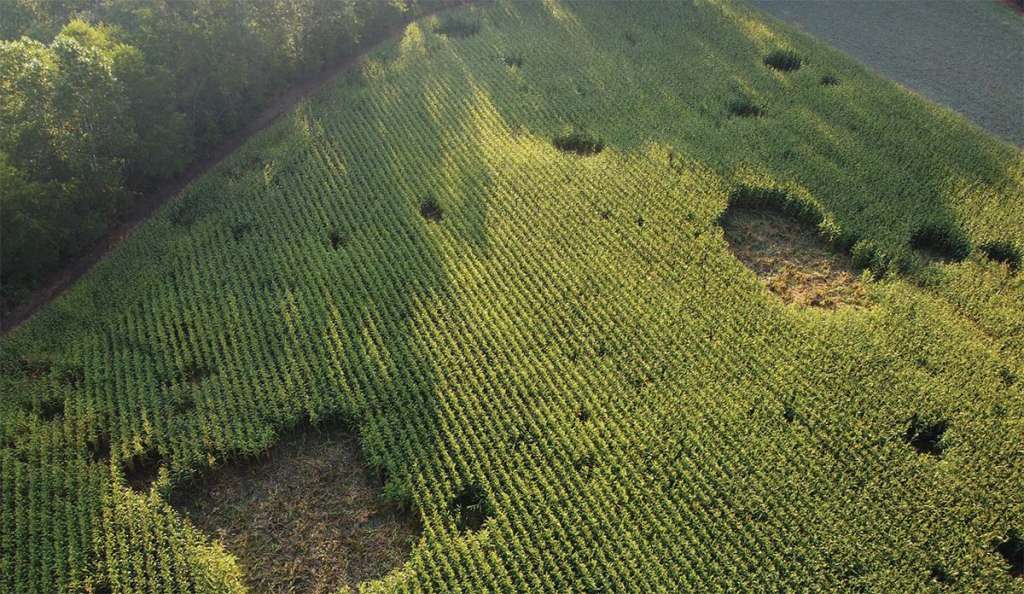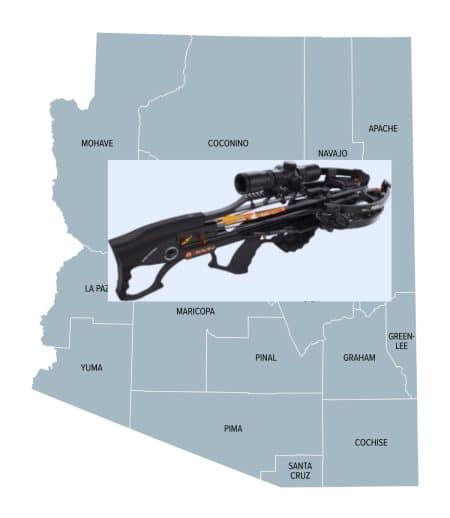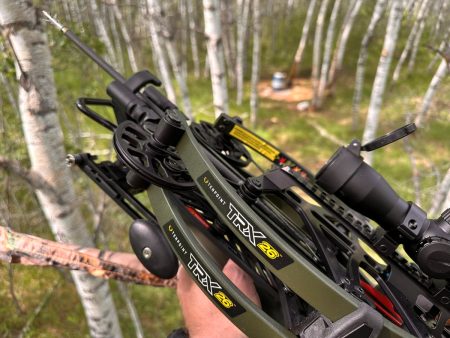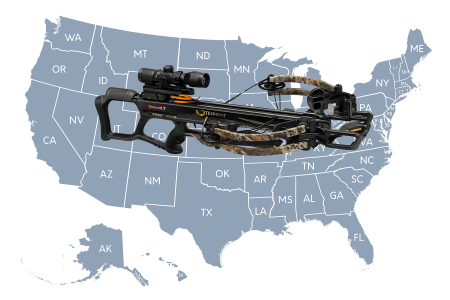Chills engulfed my entire body as my breath plumed throughout the inside of the blind. My gaze was transfixed to the west straining to see down a mowed path that ran the length of a 30 acre cornfield. It’s 15 yard width separated the cornfield from the fence row where my blind was inconspicuously positioned. The purpose of the mowed path was to connect the property owner’s residence to that of another dwelling which was located sev- eral hundred yards in the distance. They were not the only ones utilizing the path, however. It also contained copious amounts of bear sign. It was obvious that at least one bruin was regularly frequenting this side of the cornfield. Local residents were also experiencing a lot of mischievous after dark happenings. Garbage cans, bee hives, bird feeders and porches were being vandalized under the cover of darkness. Finally on October 23rd an image of the suspected culprit was caught on camera. The general consensus was that it was the largest black bear anyone had ever seen in the area.
The opening day of the archery bear season was a bust. Only a small buck, two does and several turkeys were spotted. The following day found me setting the same blind. On this morning, daybreak struggled to overtake the blackness that hung above the heavily frosted landscape. An eerie calm was the prelude to the day. Not a crow, song bird, or squirrel was evident within ear shot. The wind was still, and the recently picked corn stubble lay silent. One would think that under such conditions you’d be able to hear a large animal approaching for quite some distance. Movement to the right of the blind caught my attention. When I slowly turned my head that direction, I nearly fell out of my chair. Mere feet from the blind was a very large bear head. He’d come from the wrong direction, and the result was nearly a coronary catastrophe. He was behind the blind and now walking past it. How he didn’t wind me I haven’t a clue.
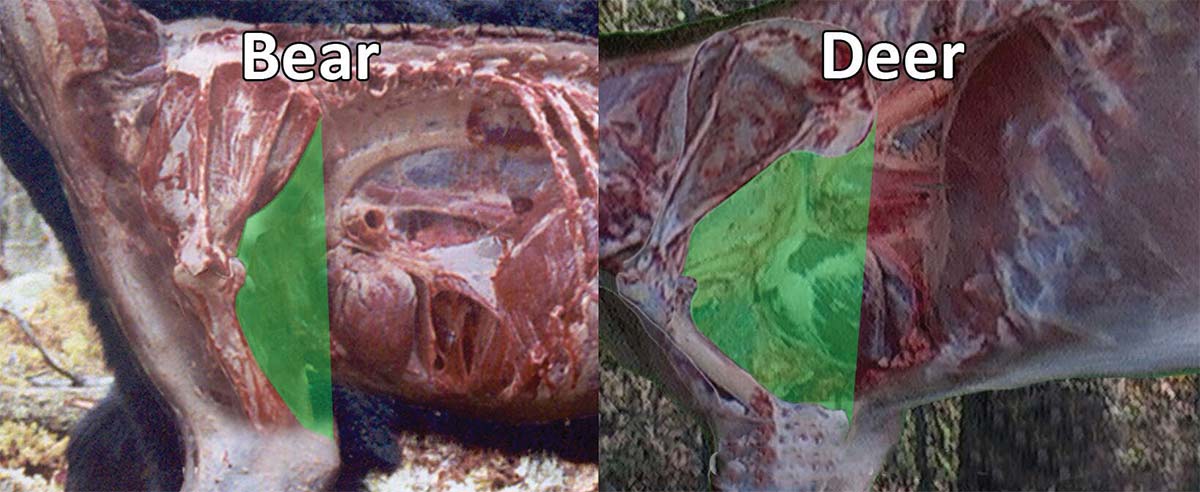
Trying to get my heart rate under control and preventing myself from hyperventilating was the first order of business. Getting the crossbow to my shoulder without making a noise or any noticeable blunder took considerable concentration as well. And for reasons still unbeknownst to me as I shouldered the cross- bow, I became transfixed on the bear’s ear tag. For some rea- son it mesmerized me, and I had to snap myself back to reality. Finally a voice in my head screamed SHOOT IT! By this time the bear was slightly quartering away and had extended its distance from the blind to fifteen yards. The last conscious thought I re- member was “He’s moving so I need to hold forward.” When the top reticle was buried squarely on its shoulder, I sent the arrow directly through the bruin’s rib cage. With a short loud growl, the bear snapped its head to the left where the arrow had entered its side. Then it wheeled and ran back past the blind in the direction from whence it had come. It happened so fast that my long underwear suffered no damage. Thinking back on it after the fact, getting tangled up in a blind with a chair, crossbow and a wounded bear isn’t on my short list of life’s adventures that I care to experience. The broadhead did its job impeccably, and the big boar piled up within 80 yards. The bear was aged at 9 years old. It weighed in at 541 pounds and was the 15th largest bear ever arrowed in the states history. As to the bruin’s ear tag, the bear had been trapped and tagged as a nuisance bear seven years prior. Although it was relocated several hundred miles away, it returned to the same general area.
Every year bowhunters head north to pursue black bears in Canada. However, limiting your bear hunting adventures to trips outside of the United States is a grave mistake. We are home to some of the biggest black bears in the world but unlike our Canadian constituents, in many states, baiting is prohibited. Bow- hunting black bears without bait is a very rewarding challenge. To do it successfully, you must have a complete understanding of the animal’s habitat preferences, movement patterns, food sources and a bullet proof technique for hunting them. A complete knowledge of their anatomy is also a prerequisite. Al- though black bears are omnivores, plant matter, nuts, berries, and farm crops make up 90% of their diet. Across their entire home range, black bears demonstrate a seasonal affinity for specific food sources often returning to these areas over and over until the supply is completely exhausted. Finding and targeting these food sources is a top priority for successful bowhunters. Corn is king when it comes to finding, patterning, and killing black bears. If there’s a sizable cornfield remotely close to an area that’s known to hold bears, it would be wise to make this your starting point. Cornfields will not only attract bears as a food source, but if large enough they will also hold bears during daylight hours. Bears cause extensive damage to the fields while feeding. They will flatten out acres of corn stocks making it difficult for the farmer to harvest them but easy for the discerning hunter to recognize which fields are actively being used.
Once the corn reaches approximately waist high (late July) I’ll hang multiple cameras around the fields. But bears are always moving, so at any given time the best habitat is the one with the most sign. An area that has bears one week may not have any the next. Especially big boars. They tend to really cover some territory. My greatest bear patterning fail to date took place along deep river bank where a bear travel corridor wound its way towards a distant cornfield. I monitored the bears utilizing the corridor for months. I hung several stands to allow for vary- ing wind directions and had as many as nine different bruins on camera during shooting hours up to within two days of the bow season opener. I was certain I’d arrow a bear. I sat the stands for five consecutive days from daylight to dark and never saw a bear. After months of the same routine they changed their pattern seemingly overnight. I’ve also incorporated new tech- nology into my bear scouting repertoire. When field corn is in its milking stage I will fly a drone over the fields to see if there’s any bear damage. This can really cut your scouting time down when you’re dealing with larger corn fields. Once you determine the areas of the field that are being worked over by the bears you can put your boots on the ground to get more precise intel on them.
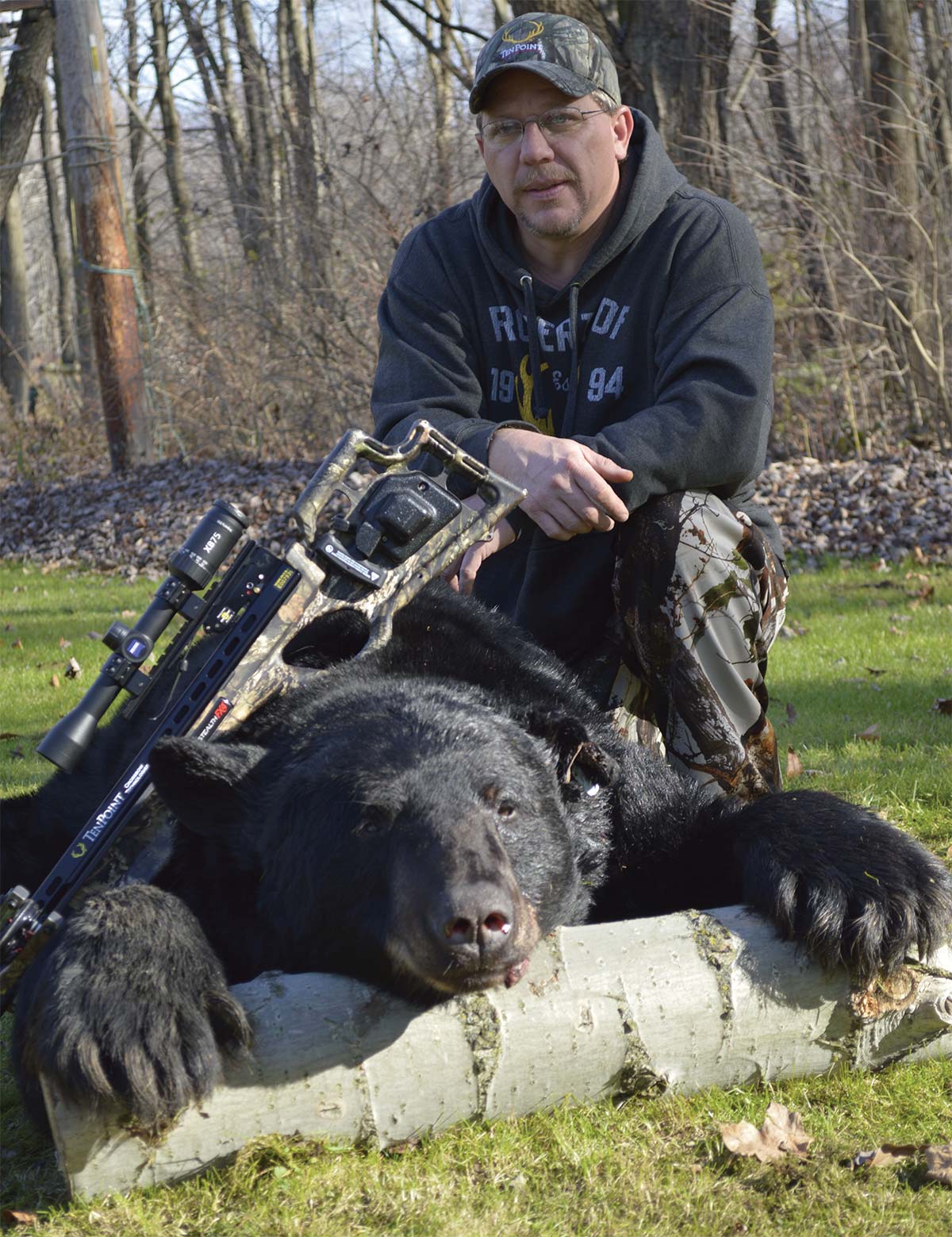
The key to success is timing because we as bowhunters are flying solo. Unlike the gun hunters who line up and gang bang them bowhunters have to calculate a more precise strike. Like deer hunting, we must be more familiar with the bears overall ten- dencies and play the odds. We can’t rely on the luck of the draw while someone else chases them out. Finding areas that elusive bears are utilizing might seem like a daunting task if it’s your first time hunting them without bait; but the more time you spend in the bear woods, the more adept you’ll become at decipher- ing bear sign. But finding the bear is only half the equation to success. Unlike targeting a bear over a bait where you can wait for the perfect shot opportunity at a completely relaxed target, more than likely when not hunting over bait your shot will be at a slow moving or alert target that most likely won’t conform to your scripted plan. Therefore having a complete understanding of the bear’s anatomy and vital area is a necessity.
Carnivore anatomy is slightly different from that of a whitetail. The fore limb is slightly more forward in its location to the thoracic skeleton. This puts the entire heart rearward of the shoulder line when presented broadside. This is also what you would consider to be the center of the vitals. The area I shoot for on deer which is what most hunters are familiar with shooting at is actually around 2-2.5” further behind the vertical shoulder line on a bear, if you are viewing it broadside. So, on bears, I move my vertical line back but still maintain the lower third. Some say there are roughly six inches of hair below a bear’s belly, but I don’t find that to be the case. I haven’t seen it enough to warrant coming off the lower third line for height during the shot. You can see the difference in the position of the heart, and the available vital space forward of the shoulder line between the two quite easily in this picture. So there actually is a method to the madness with regards to good shot placement. It’s partly about knowledge of the animal’s anat- omy, which changes according to species. But it also depends on a person’s level of experience and skill. I can give you my opinion as to the best place to put the broadhead, but only you can decide what shot to take when the opportunity presents itself. Big bears also have a way of unnerving even the most experienced of bowhunters. A 500 pound bear standing within bow range is quite an intimidating sight and something that most hunters rarely experience. More than once they’ve turned veteran bow- hunters into quivering masses of incompetence. Knowing and practicing with your equipment extensively can help compensate for any mental or physical breakdowns that may transpire when that moment of truth arises. Arrowing a trophy black bear is on most bow hunters’ bucket list. Proper preseason scouting and preparation along with a thorough familiarity of your equipment can make it a reality. And even when you’re not hunting over bait, the key to putting an arrow into a bear’s heart is through its stomach. Find the food sources and you’ll find the bears.
Per our affiliate disclosure, we may earn revenue from the products available on this page. To learn more about how we test gear, click here.

